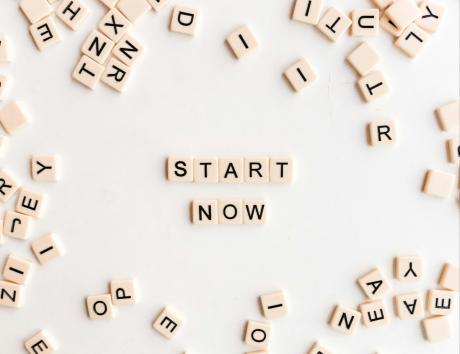Effective Ways to Start a Resume: A Step-by-Step Guide
The beginning of your resume is crucial – it’s the first thing a recruiter sees, so it must concisely and accurately describe your skills, experience, and achievements. Whether you choose a summary or an objective, this professional description has to convince the hiring manager to continue reading your application. This guide teaches you how to start a resume and includes compelling tips and examples.

Types of resume introductions
There are multiple types of resume introductions and they all suit unique situations and job seekers. The four most common resume introductions include:
- Summary: Describes your career experience and achievements. Best for established professionals who have been in their industry for over two years.
- Objective: Explains your skills and career goals. This is ideal for recent graduates, junior professionals, or people changing careers.
- Qualifications summary: Details your most important skills and competencies in a bullet list. Perfect for people switching industries, who need to highlight transferable skills.
- Profile: Describes your career experience as well as your top skills. This is a combination of a resume summary and a qualifications summary and is useful for a wide range of professional levels.
Resume summaries and objectives are the two most common types of resume introductions. Our resume samples provide realistic examples of both and showcase many different professional levels.
Crafting a compelling resume introduction
A well-written resume introduction concisely communicates who you are and why you’re an excellent fit for their open role. Let’s explore two powerful ways to add depth and clarity to your resume intros, making them more compelling and impactful to each recruiter who reads them.
Tailor it to the job description
Carefully read the job description and make note of specific keywords, including skills, achievements, and even the job titles they use. For example, the same role can be referred to as both Web Developer and Full-stack Developer.
Using these terms in your resume introduction shows your direct relevance and positions you as a candidate with the exact qualifications the company is looking for. Hiring managers often sift through hundreds of resumes to fill one role, and they’ll be happy to see the required skills right in the introduction.
This practice also helps you build an effective ATS resume. The right keywords show applicant tracking systems that your resume is relevant and push them through for review.
Highlight relevant skills and achievements
Choose a handful of powerful skills and accomplishments and mention them right away. You’ll provide a more extensive list in your Work Experience and Skills sections, but your summary or objective is a great opportunity to introduce powerful statements early on.
The most impactful elements are achievements and hard skills, such as Python expertise or completing a successful project, but it’s also important to provide soft skills if they’re vital to the role. For example, emphasizing your patience and emotional intelligence is a good idea for registered nurses.
Expert Tip:
Writing your resume introduction
Now that you know what goes into a strong resume introduction, let’s take a closer look at writing one.
We recommend all intros be two- to four-sentence long descriptions. This gives you just enough space to discuss your primary skills and spark their interest but it doesn’t go on so long that the recruiter loses interest.
Start with your job title and how long you’ve been in that specific industry to give immediate context to your resume. If you’re new to the industry, start your introduction with your job title and relevant education, such as GPA or college degree.
After this, highlight a few essential skills throughout one to two sentences. Add a small description of how you use your skills for better context, such as: “Expert in stakeholder management, contributing to the success of crucial projects and ensuring client satisfaction.”
End with a strong line describing a license or certification, or simply say you’re excited to bring your talents to their team. This is a great opportunity to use their company name and show you don’t just copy/paste your application between organizations.
Resume introduction examples
Now, we’ll review some realistic resume introduction examples to help inspire you. Choose which type of resume intro you need, and then study the structure to see how it applies to you and your skills.
Summary
Energetic Restaurant Manager with 8 years of experience handling a fast-paced five-star restaurant. Expertise in training staff in customer service techniques, leading to 97% customer satisfaction rate and a Best Service award. Excited to use powerful leadership skills to help The Black Rooster achieve higher profitability, efficiency, and performance.
Objective
Dedicated graduate with a Bachelor of Business Administration seeking a Human Resources Coordinator position. Eager to use emotional intelligence and business acumen to encourage a healthy work culture and build solid working relationships. Looking to grow my career by using my interpersonal skills and building my HR experience.
Qualifications summary
- Bilingual, comfortably conversing in fluent English and Mandarin Chinese.
- Expert stakeholder management, addressing concerns with ease and maintaining a 98% client satisfaction rate.
- Strong interpersonal skills, quickly building relationships with colleagues and clients.
- Winner of “Project of the Year” in 2018 and 2020
Profile
Passionate Web Developer with 7 years of experience managing website and application projects. Keen skills in JavaScript, CSS, jQuery, SQL, and HTML5. Adept in using UX/UI abilities to build a better customer experience. Excited to bring sharp programming skills to Mint Industries.
Tips when writing your introduction
Here are a few tips to help you get started writing your resume introduction:
- Choose an intro type that suits your experience level
- Highlight crucial soft skills like leadership, initiative, safety, and cost-saving skills
- Showcase your best, most relevant technical skills
- Start each sentence with an action word like “Expertise in…” or “Keen skills in…”
- Write your intro from the implied first-person perspective. This means writing in the first person but removing unnecessary, distracting words like “I” and “my.”
“A well-written resume introduction concisely communicates who you are and why you’re an excellent fit for their open role.”
Best practices for resume introductions
Lastly, we’ll cover the top do’s and don’ts for an impactful, meaningful resume introduction. Bookmark this page and keep this list in your back pocket – take it out whenever you’re building a resume, and you’ll have a quick reference.
Here are our best tips and tricks:
- Keep your resume introduction concise and informative. Hiring managers only spend a few seconds on each resume, and a lengthy summary may turn them off.
- Ask colleagues and friends for feedback and make adjustments where necessary.
- Use keywords from the job description, including skills and job titles, to help your resume get through applicant tracking systems.
- Take advantage of pre-made resume templates to ensure your introduction looks clean and professional.
- Don’t be afraid to add bits of your personality into your summary, especially if you’re applying to a more relaxed company. Many small companies appreciate this; it helps you stand out from hundreds of other applicants.
Learn how to start a resume the right way
An impactful resume introduction grabs the reader’s attention and immediately conveys your fit and relevance. Create an excellent intro using our top tips:
- Choose a type that suits your career level – recent graduates should opt for objectives, and experienced professionals are better off choosing summaries.
- Start sentences with strong words like Energetic, Dedicated, Experienced, Expertise, Adept in, and Expert in.
- Tailor it to the job description and use relevant keywords
- Keep it concise; quickly describe yourself in two to four sentences.
Ready to use these tips and build a winning resume today? Head over to CVwizard’s resume maker where you can easily use whichever resume introduction you want, flexing header titles and using bullets or plain text for the body.
Make an impression with your resume
Create and download a professional resume quickly and easily



